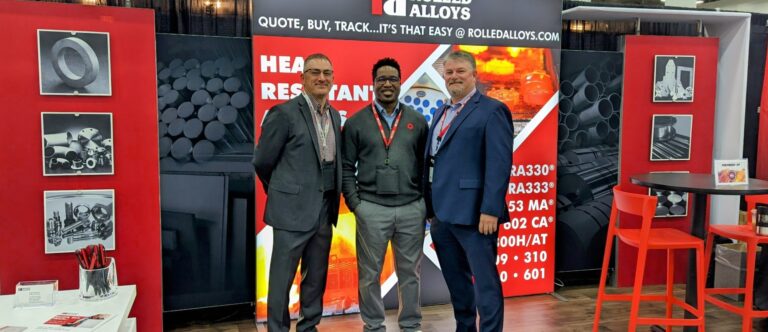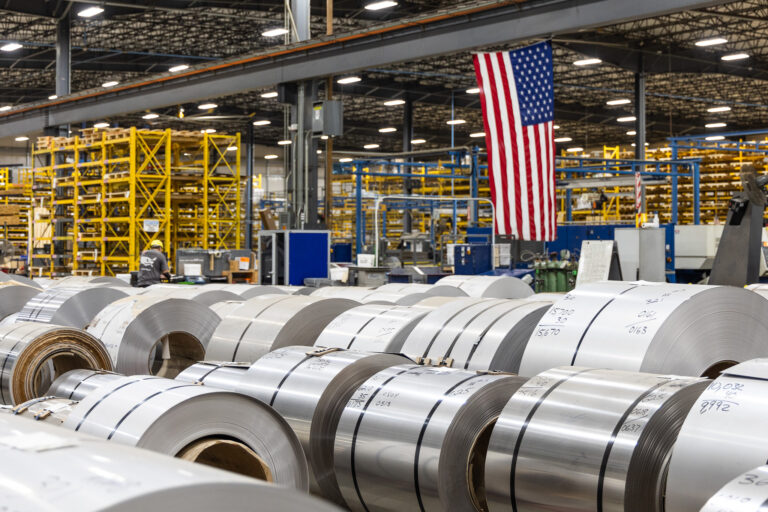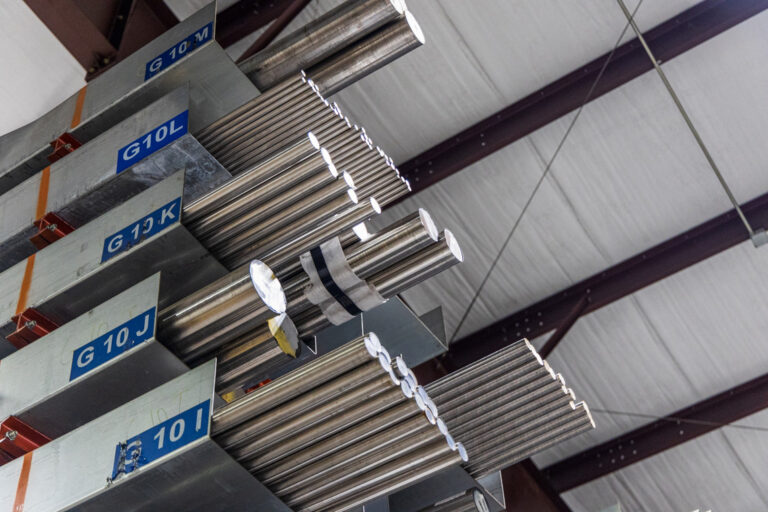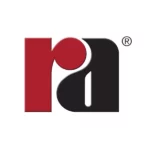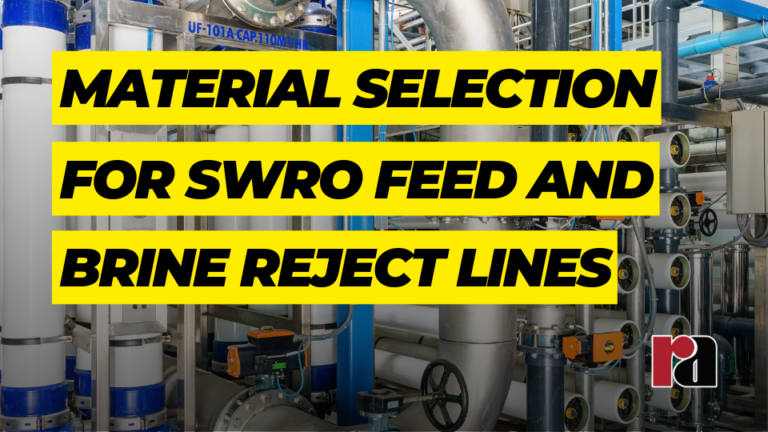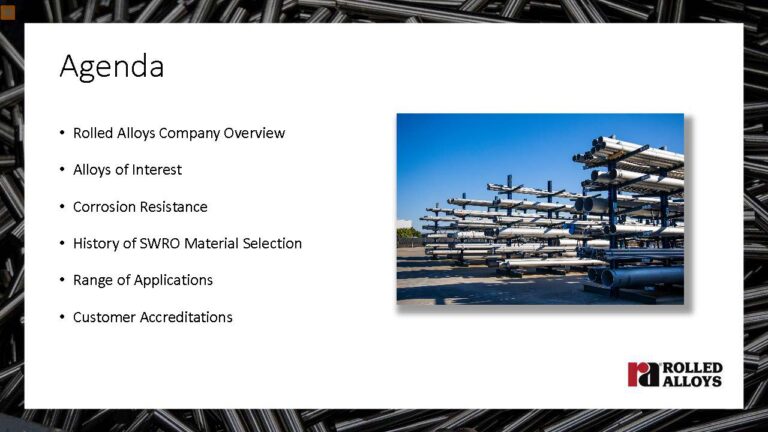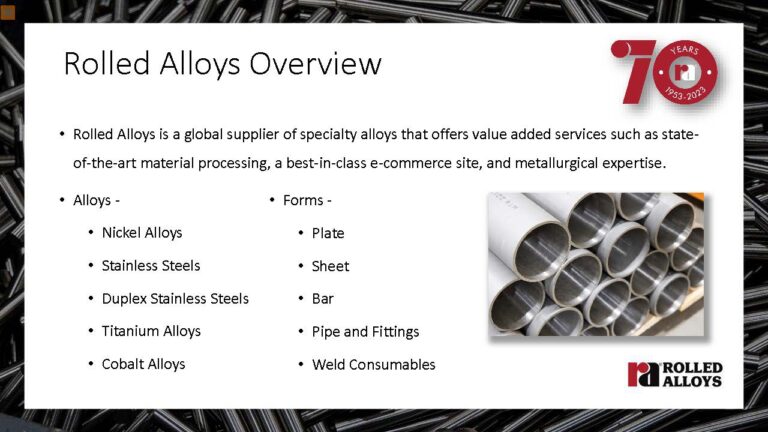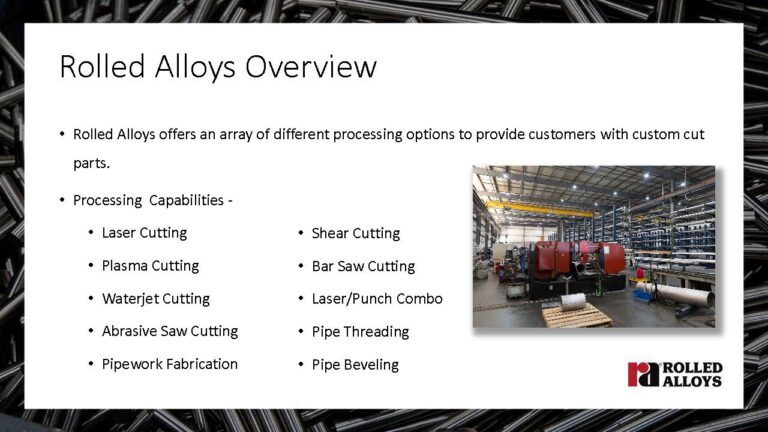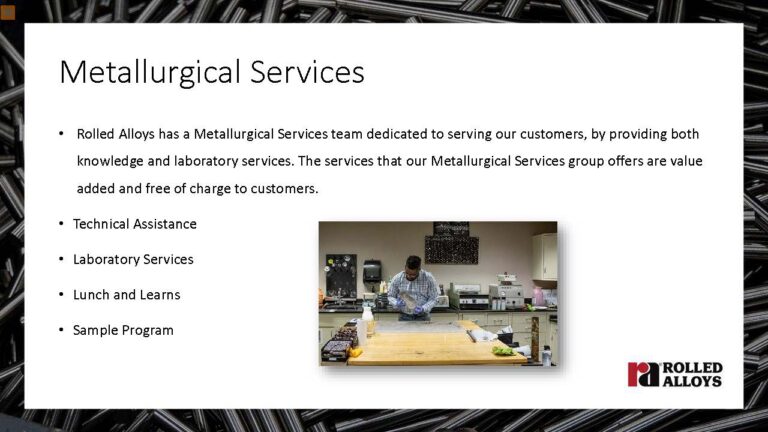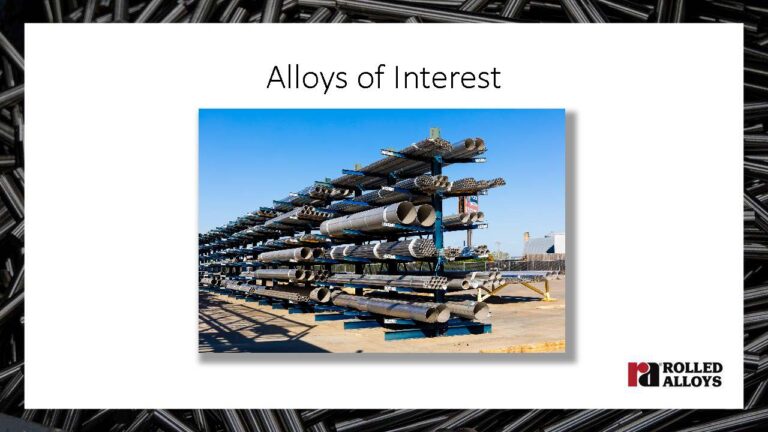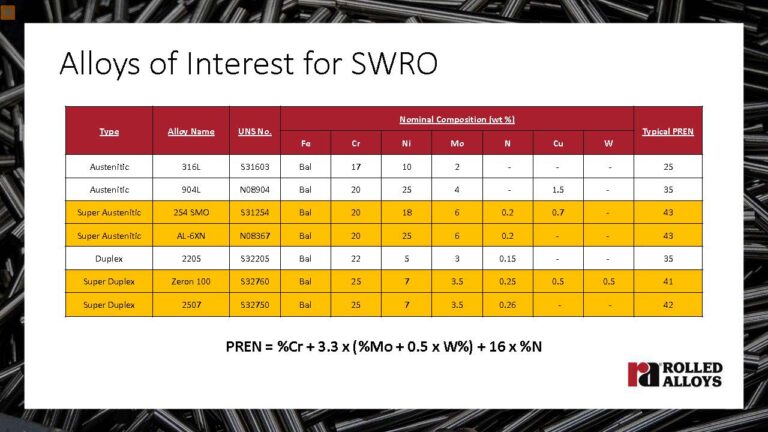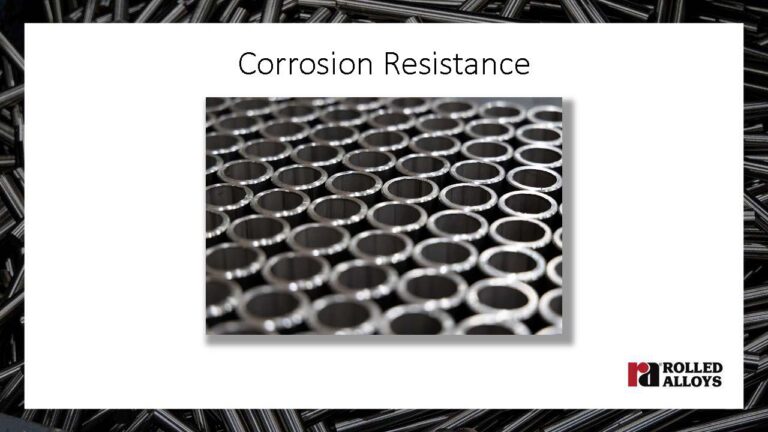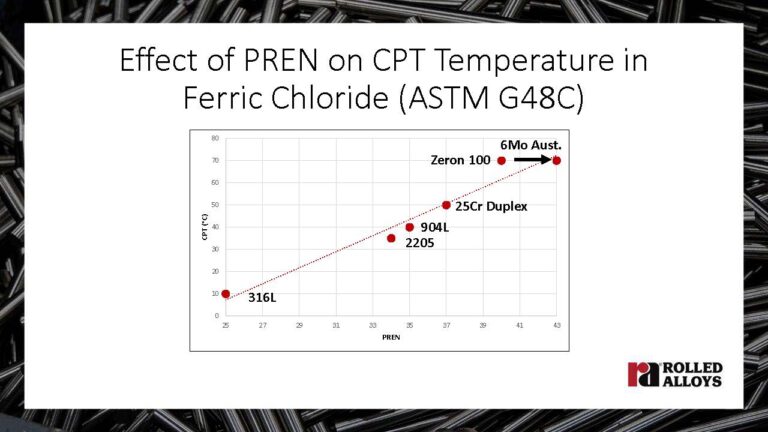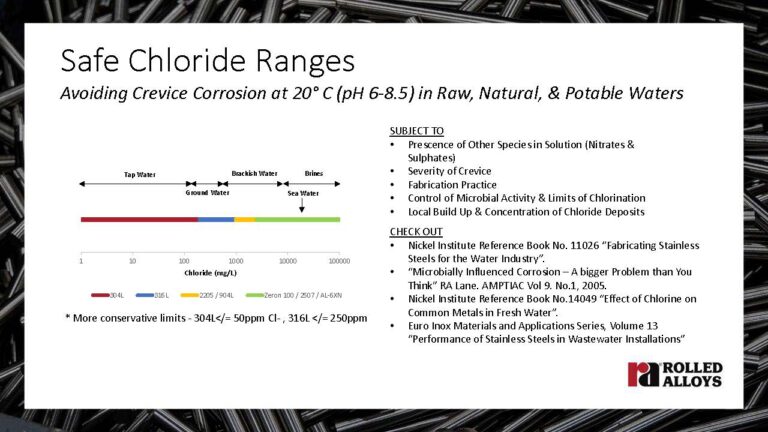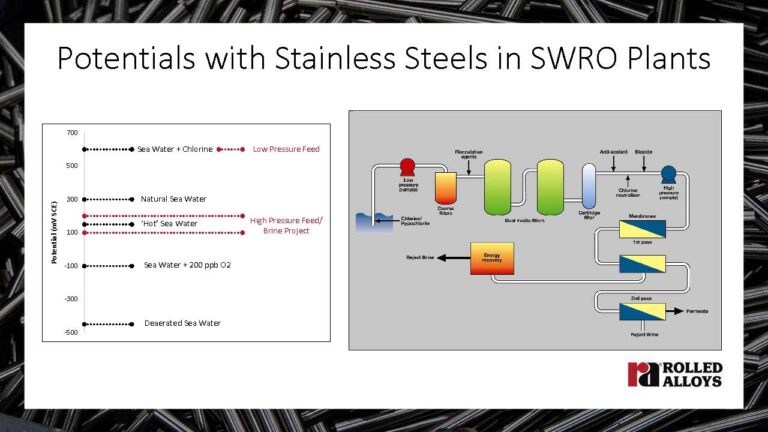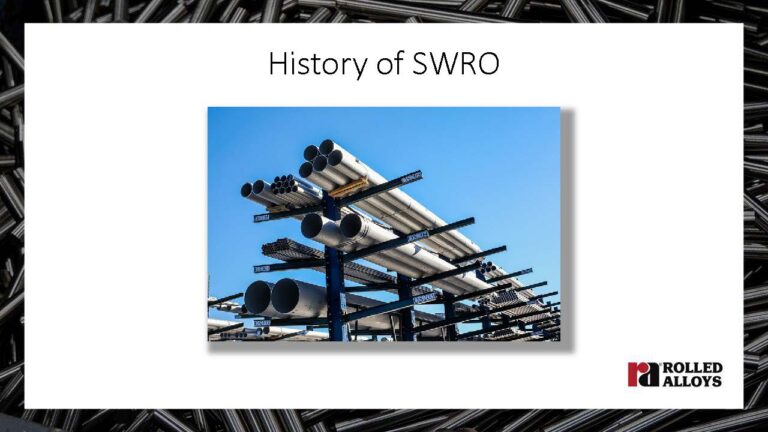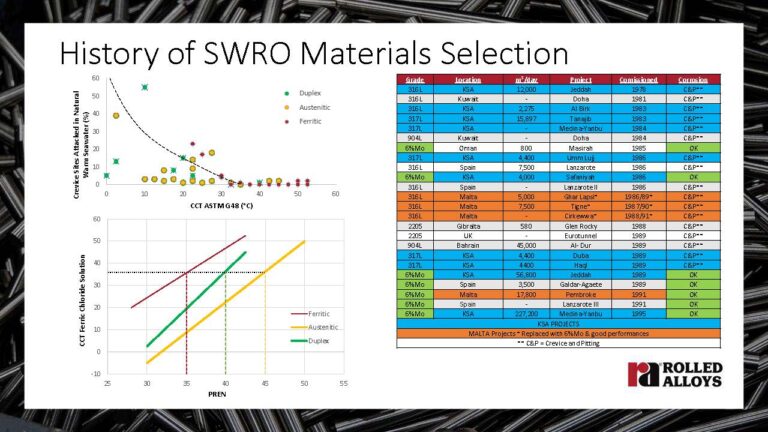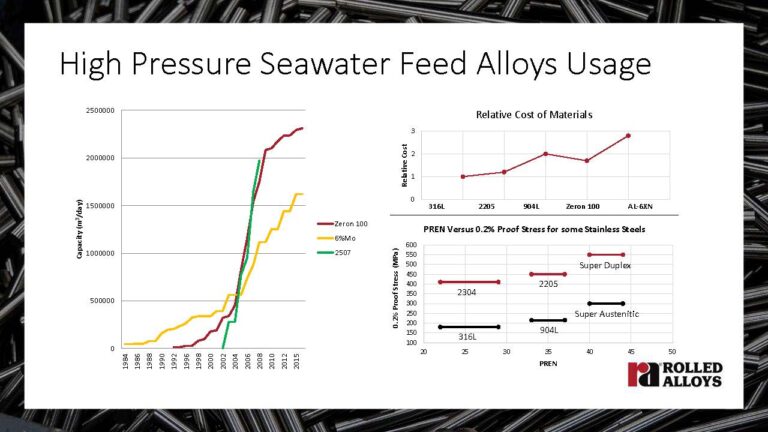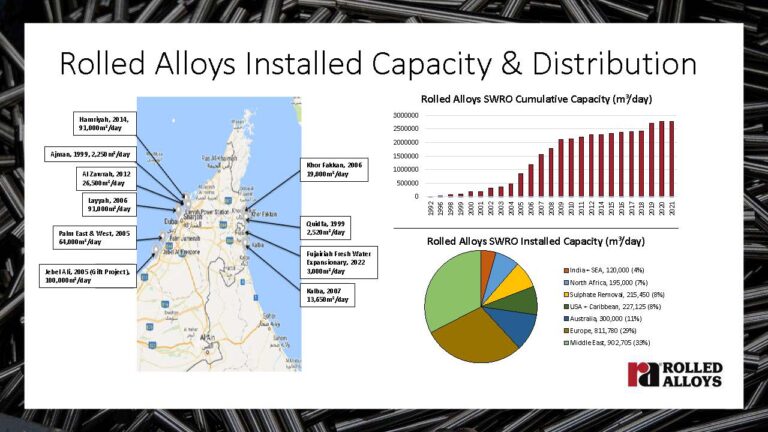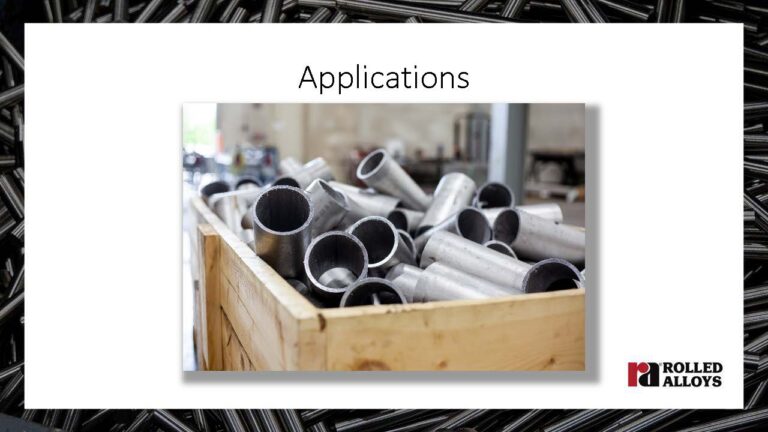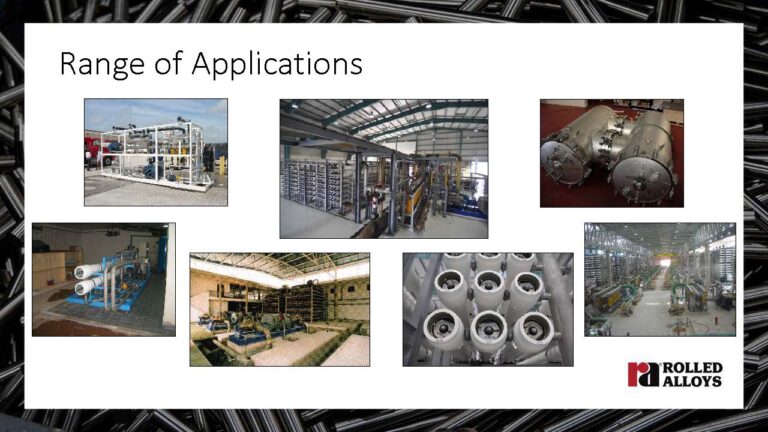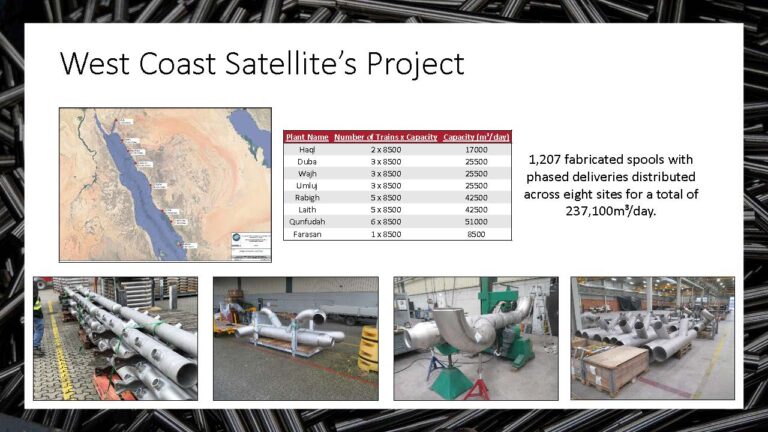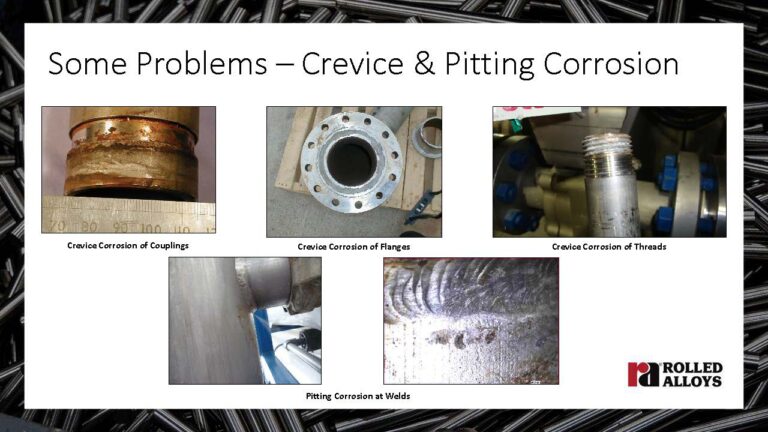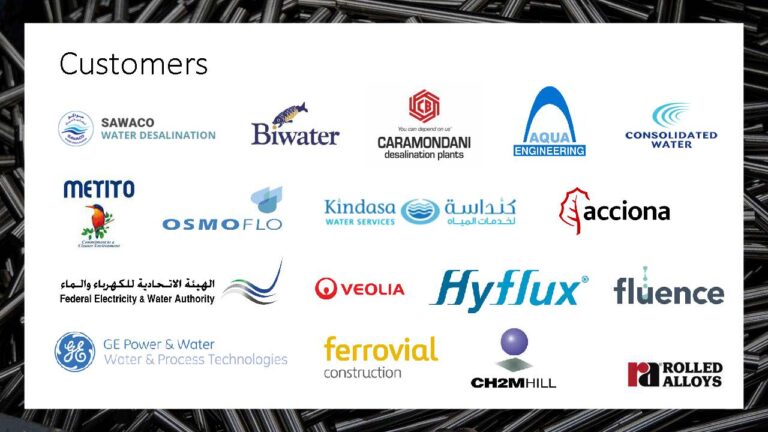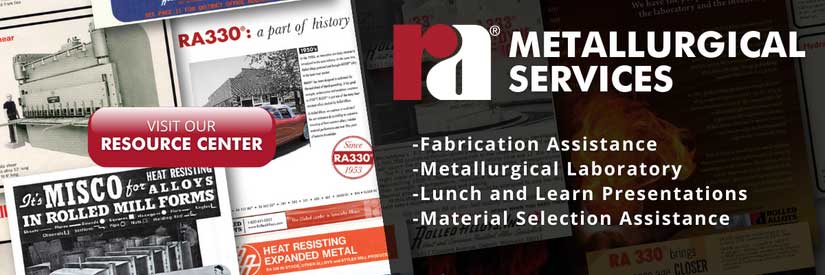Best Practices When Using Specialty Materials for SWRO Feed and Brine Reject Lines
Selecting materials for Saltwater Reverse Osmosis (SWRO) applications demands precision and expertise.
In this comprehensive guide, we delve into the evolution of material selection strategies, exploring corrosion-resistant alloys and their performance in SWRO environments.
WATCH THE PRESENTATION BELOW
PRESENTATION SLIDES
SUMMARY
Understanding Material Selection for SWRO: The journey begins by understanding the pivotal role of specialty alloys in SWRO systems. Rolled Alloys, a global supplier, offers a range of state-of-the-art materials, including nickel alloys, stainless steels, titanium, and cobalt alloys. Their expertise lies in providing technical assistance, laboratory services, and innovative solutions for the industry.
Corrosion Resistance in Stainless Steels: Dr. Byrne, an industry expert, outlines the correlation between compositions of stainless steels and their resistance to corrosion. Factors like Pitting Resistance Equivalent Number (PREN) play a crucial role in determining the seawater resistance of these alloys.
Historical Evolution and Challenges: The historical journey reveals the trial-and-error phase in material selection, highlighting challenges faced by using lower-grade stainless steels like 316. Instances of pitting and crevice corrosion led to the realization that higher-grade materials, like 6% molybdenum alloys and super duplex stainless steels, were better suited for SWRO applications.
Transition to Advanced Grades: The late ’90s witnessed a transition towards advanced alloys, particularly super duplex stainless steels, as the industry embraced RO technology for larger municipal SWRO projects. This transition marked a significant shift from earlier materials due to their cost-effectiveness and superior performance.
Challenges and Solutions in Material Selection: While 6% molybdenum alloys and super duplex stainless steels performed well, they weren’t immune to corrosion. Challenges such as crevice corrosion at connections and pitting corrosion of welds necessitated stringent adherence to best practices in manufacturing, fabrication, and treatment processes to minimize risks effectively.
Conclusion: Rolled Alloys stands as an industry leader, offering specialized expertise and a robust supply chain for SWRO projects. Their commitment to delivering quality materials and technical support underscores their position as a reliable partner in this niche market.
Key Takeaways:
- Evolution of material selection in SWRO from trial-and-error to advanced alloys
- Importance of corrosion-resistant alloys like super duplex stainless steels
- Challenges and cost-effectiveness in material selection for SWRO
- Rolled Alloys’ expertise and commitment to providing quality materials for SWRO projects
Please contact the Rolled Alloys Metallurgical Services group at 1-800-521-0332 or submit your questions below.
Buy Online Anytime
Our dashboard makes it even easier to shop online anytime from anywhere. Quote, buy, and track 24 hours a day.
E-Services Stocking Programs
Our e-service stocking programs put you in the driver seat by using our customized purchasing options to order your recurring material with ease. Whether you have an internal process for purchasing and receiving in place or maybe looking for solutions to become more efficient, we have a program that will work for you.

Trade Shows
Come talk to a Rolled Alloys representative in person about your project. You can find us at these trade shows.

March Mania 2025
Every Online Order in March is a Chance to Win One of 8 Great Prizes!
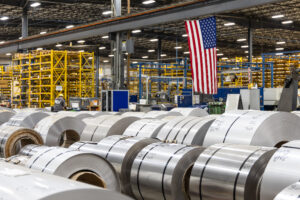
Instant Pricing on Nickel, Stainless Steel, Duplex, and Titanium
Get real-time pricing and availability for nickel, stainless steel, duplex, and titanium—all in one place.
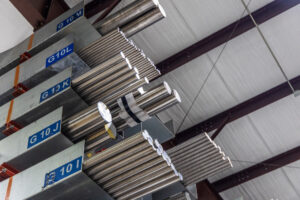
New and Expanded Stock for 2025
New Titanium, Stainless, Nickel and Cobalt in Stock Now – CP Ti Grade 2, 635, 718 and More!
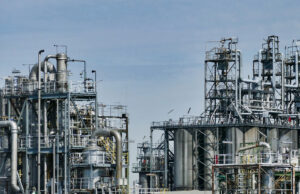
History and Uses of Alloy 800
Discover the evolution of Alloy 800, from its origins during the 1950s to modern derivatives like Alloy 800H/800HT. Learn about its high-temperature strength, petrochemical applications, and commercial availability today.
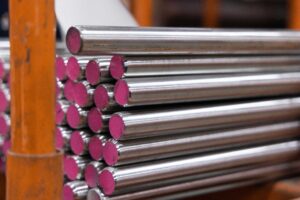
New Bar Stock Available
New Round and Flat Bar Products in Stock at Rolled Alloys


